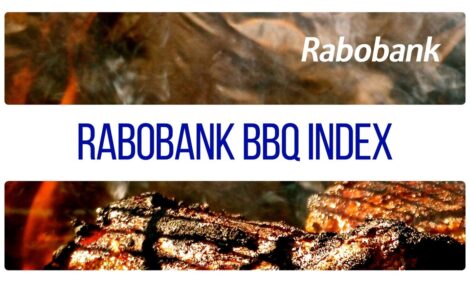



Reports of Salmonella in Ducks and Geese
There were a total of 27 Salmonella incidents in ducks in Great Britain during 2011, 65 per cent fewer than the previous year, according to the 2011 edition of 'Salmonella in Livestock Production in GB', an annual publication from the Veterinary Laboratories Agency. There were no reports of Salmonella from geese last year.The total number of VIDA submissions from ducks and geese in 2011 was
slightly lower than in 2010, with 105 submissions from ducks (compared to 125 submissions in 2010) and 41 submissions from geese (compared to 56 submissions in 2010). Roughly three-quarters of the submissions from both
species in 2011 were diagnostic.
There were no reports of Salmonella from geese in 2011. There have been very
few reports of Salmonella from geese in recent years, with four incidents in 2010,
two in 2009 and one report in both 2008 and 2007.
There were a total of 27 Salmonella incidents in ducks during 2011, which
represents a 65.4 per cent decrease relative to 2010 (78 reports) and 91.1 per cent decrease
relative to 2009 (303 reports). Reports from ducks represented 1.4 per cent of all
Salmonella reports in 2011, compared with 3.5 per cent in 2010 and 16.9 per cent in 2009.
Of the 27 reports, 24 occurred as a result of voluntary surveillance activity, two
arose from ZO4 visits, and one was for diagnostic purposes. Twenty-two of the
incidents arose from samples collected at the farm while the remaining five were
from samples collected at hatcheries. The decline in Salmonella incidents in
ducks that has been observed since 2009 may have resulted from changes in
monitoring on commercial holdings.
A Duck Assurance Scheme (DAS) was launched at the 2010 Pig and Poultry
Fair. It has been developed for duck producers who are keen to demonstrate
their professionalism and high standards of production, and SAI Global are the
designated inspection body for the scheme. The scheme is owned and
administered by the British Poultry Council and is managed by an independently
chaired Technical Advisory Committee. It covers all areas relating to quality and
welfare in duck production: breeding, hatching, rearing, catching, transport,
slaughter, free-range and table eggs, and includes guidance on control of
Salmonella by means of biosecurity, farm hygiene and vaccination. However,
there is no statutory monitoring for Salmonella in ducks or geese in Great Britain.
S. Typhimurium was the most commonly reported serovar from ducks in 2011,
responsible for 48.1 per cent of all Salmonella incidents. However there was a 23.5 per cent
reduction in the absolute number of reports of this serovar (13 incidents)
compared with 2010 (17 incidents). Reports of S. Typhimurium had been
increasing between 2007 and 2010. Most of the incidents in 2011 involved S.
Typhimurium DT30 (seven incidents) or DT8 (five incidents), which are typical duck associated phage types, although there was also one incident of DT193. DT8
and DT30 were also responsible for the majority of incidents in 2010, while
DT193 was last reported in 2009. The increase in reports of S. Typhimurium in
2010 and 2011 in part reflects trace-back investigations following an outbreak of
human illness due to S. Typhimurium DT8 associated with the consumption of
duck eggs, and also specific investigations within the duck industry.
S. Indiana was the most common serovar in ducks and geese between 2007 and
2010, responsible for over a third of incidents in each of those years. However,
there were only three incidents of this serovar in ducks in 2011, which is an
89.3 per cent reduction relative to the number of reports of this serovar in ducks and
geese in 2010 (28 incidents) and 97.5 per cent reduction relative to 2009 (118
incidents). Thus, although it was still the second most common serovar in 2011,
it was responsible for only 11.1 per cent of Salmonella incidents in ducks.
The absolute frequency of most other serovars has also been declining since
2009. As a result, there were only single incidents of any serovar other than S.
Indiana or S. Typhimurium in 2011. The most notable declines have involved S.
Give, S. Hadar, S. Kedougou, S. Mbandaka and S. Orion and its variants. Prior
to 2010, there were over 150 incidents of these five serovars combined each
year, yet in 2011 there were no incidents of S. Give or S. Kedougou and only
single incidents of the other three serovars. There were also no incidents of S.
Havana in 2011 compared with three incidents in 2010.
There was a single incident of S. Enteritidis PT9b in 2011. There have been very
few reports of this serovar from ducks and geese in recent years, with one S.
Enteritidis incident in 2008 and 2009 and none in 2010. Phage type 9b is often
associated with ducks and was also involved in the S. Enteritidis incidents in
2008 and 2009.
There were no reports of monophasic strains of S. Typhimurium from ducks in
2011. This follows a single incident of Salmonella 4,5,12:i:- in 2010 and an
incident of Salmonella 4,12:i:- in 2008. In both instances, this was the first time
these monophasic strains had been isolated from either ducks or geese in Great
Britain.
There was one incident of S. Lexington in 2011, which had never previously been
recorded from ducks or geese. There were also single incidents of S. Bredeney,
S. Kottbus, S. Newport and S. Senftenberg in 2011.
Further ReadingYou can view the full report by clicking here.Other chapters from the AHVLA report are available: - report summary [click here] - Salmonella in feeds and feed ingredients [click here] - Salmonella in chickens [click here] - Salmonella in turkeys [click here] |
October 2012








